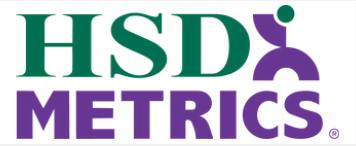This post was co-written by Dr. Brad Shuck, Associate Professor Department of Educational Leadership, Evaluation and Organizational Development at the University of Louisville.
The latest research is very clear that even before COVID-19 changed the way we work and lead, community, collaboration, and connection were emerging currencies into today’s workforce. While many organizations focused on the tangibles — free coffee in the break room, flexible benefits, recognition strategies — employees who told us they felt connected to the organization emotionally were more likely to stay engaged, outpace their competition, and stay longer. But now, all that has changed. Or, has it.
As global circumstances are shaping how we work and uncertainties loom, it seems that messages of connection, community, and collaboration have never been more important. Right now, there is a lot of confusion, uncertainty, and anxiety in the workforce, but it is normal and okay to feel this way.
Many companies are offering tips and hacks on how to build a home office or adjust work schedules, but few people are talking about the feelings associated with this change and how to process these feelings. Routines will be critical in the next few weeks – establishing them and maintaining them. For many, we need routines; they provide some comfort in a world that is becoming more uncomfortable.
But, as a leader, the best thing you can do for your employees is to remain present, communicate clearly, share support, offer encouragement, and show relentless compassion. It is not business as usual, and you should not lead that way. We can learn a lot about crisis leadership and applying those principles to our place of work – and our businesses. Three areas to focus on in the coming weeks: communication, clarity of vision and values, and maintaining community.
- The first thing many people look to is steady communication that is transparent, authentic, and unwavering. Communication needs to be predictably consistent, fact-based and prioritized. Otherwise, the message can be lost.
- You cannot lead with a detailed(?) plan. It won’t work right now. Lead with grace and compassion, love with a kind word, and then inspire to the plan through a clarity of vision and values. If you lead with a plan first, no one will hear a plan. They will hear more things to process. When you lead with vision and values, you cut through the clutter and speak a language that minds in crisis can internalize.
- Maintaining a sense of community is perhaps, one of the more difficult challenges right now; as a leader, you can reach out and check on individual team members, building online communities where employees can check-in, as well as prioritized and bulleted communication that keeps teams informed but not overwhelmed. Community building is intentional and, more than ever, our words impact? immensely to how our employees are feeling.
Right now, engagement is not a goal; connection through community is. As employees orient themselves to this new era of work, communication, connection, and collaboration will be the currencies we operate under. The ability we develop to do these things will in many ways define our outcomes over the next few weeks and months.
In light of these circumstances, we would like to offer you an opportunity to gauge how your employees are coping with this pandemic. In conjunction with Dr. Brad Shuck of the University of Louisville, we developed a short pulse survey to gain insight into the levels of uncertainty that your employees are facing and allow them the chance to be and feel heard.
Our goal is to gather as much data as possible to identify patterns within industries that will help our partners better manage their workforce during this uncertain time. We will analyze this data and publish the results so that you can determine and gracefully address the current status of your employees’ mindsets and communicate effectively. If you have a moment, please take and share this survey.


